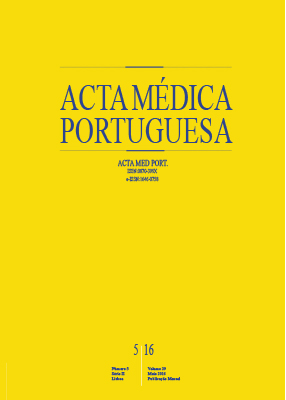Analysis of the Cochrane Review: Pedicle Screw Fixation for Traumatic Fractures of the Thoracic and Lumbar Spine. Cochrane Database Syst Rev. 2013;05:CD009073.
DOI:
https://doi.org/10.20344/amp.7687Keywords:
one Screws, Fracture Fixation, Lumbar Vertebrae/injuries, Randomized Controlled Trials as Topic, Spinal Fractures/surgery, Thoracic Vertebrae/injuries.Abstract
Traumatic fractures of the thoracic and lumbar spine are common causes of spine surgery. Pedicle screw fixation is usually chosen, using monosegmentar, short or long segment instrumentations, with or without bone graft. This review aims to evaluate the effect of transpedicular fixation in traumatic fractures of the thoracic and lumbar spine. A systematic search on controlled, randomized or quasi-randomized trials comparing different methods of surgical treatment of this fractures was performed, followed by a process of article selection, data extraction and bias assessment by 3 independent authors. Eight articles were included in a total of 5 comparisons, between different transpedicular fixation techniques. No significant differences on function or quality of life, neurologic status or limitation of motion were found. Only instrumentation with fracture level screw incorporation showed significant decrease of pain when compared with instrumentation alone. Several techniques resulted in significant improvements of different radiological parameters. Significantly, surgeries with smaller duration were associated with lesser blood loss. Bone graft use caused a significant raise in post-operative complications, namely donor site pain. So, this paper showed that significative improvements in radiological parameters do not associate with correspondent clinical benefits, and only instrumentation with level screw incorporation is associated with a clear benefit on pain. Moreover, the need for bone graft is questioned, since it leads to no clinic-radiological improvement with a raise of complications. However, a small number of controlled studies is available on this topic.
Downloads
Downloads
Published
How to Cite
Issue
Section
License
All the articles published in the AMP are open access and comply with the requirements of funding agencies or academic institutions. The AMP is governed by the terms of the Creative Commons ‘Attribution – Non-Commercial Use - (CC-BY-NC)’ license, regarding the use by third parties.
It is the author’s responsibility to obtain approval for the reproduction of figures, tables, etc. from other publications.
Upon acceptance of an article for publication, the authors will be asked to complete the ICMJE “Copyright Liability and Copyright Sharing Statement “(http://www.actamedicaportuguesa.com/info/AMP-NormasPublicacao.pdf) and the “Declaration of Potential Conflicts of Interest” (http:// www.icmje.org/conflicts-of-interest). An e-mail will be sent to the corresponding author to acknowledge receipt of the manuscript.
After publication, the authors are authorised to make their articles available in repositories of their institutions of origin, as long as they always mention where they were published and according to the Creative Commons license.









